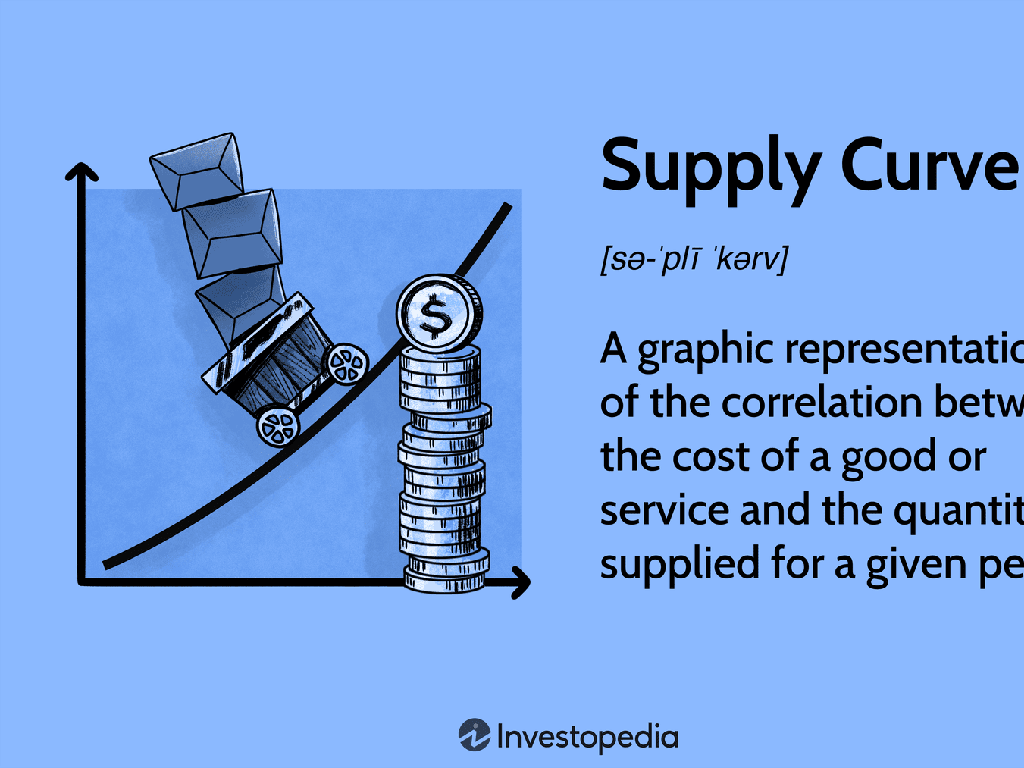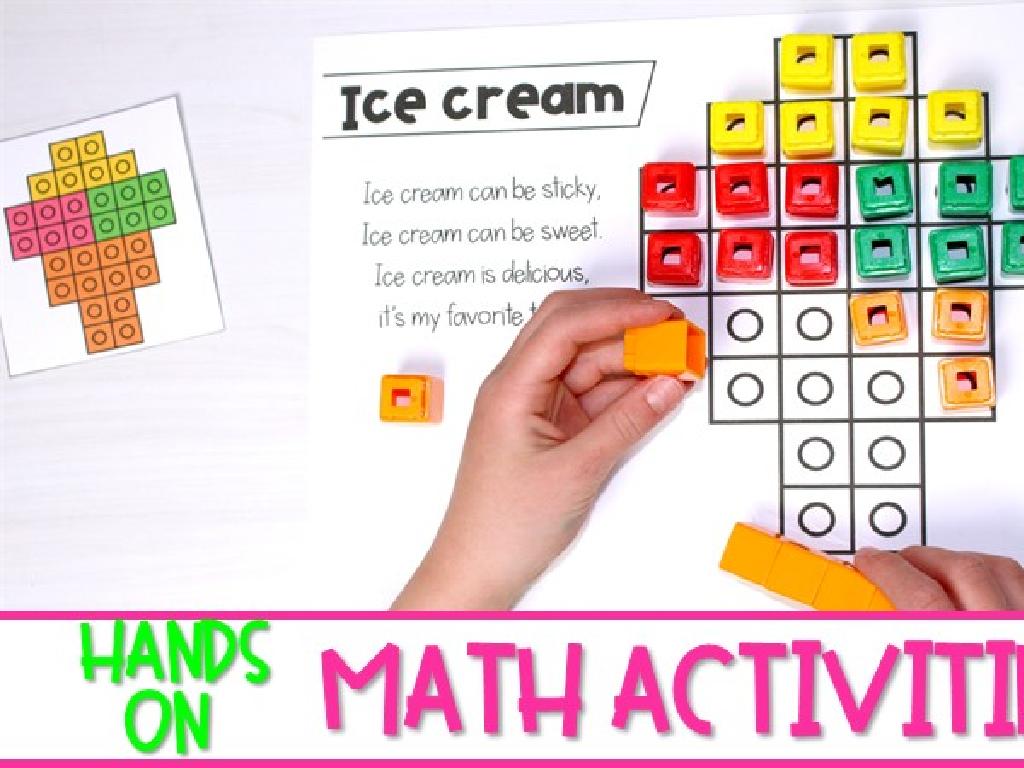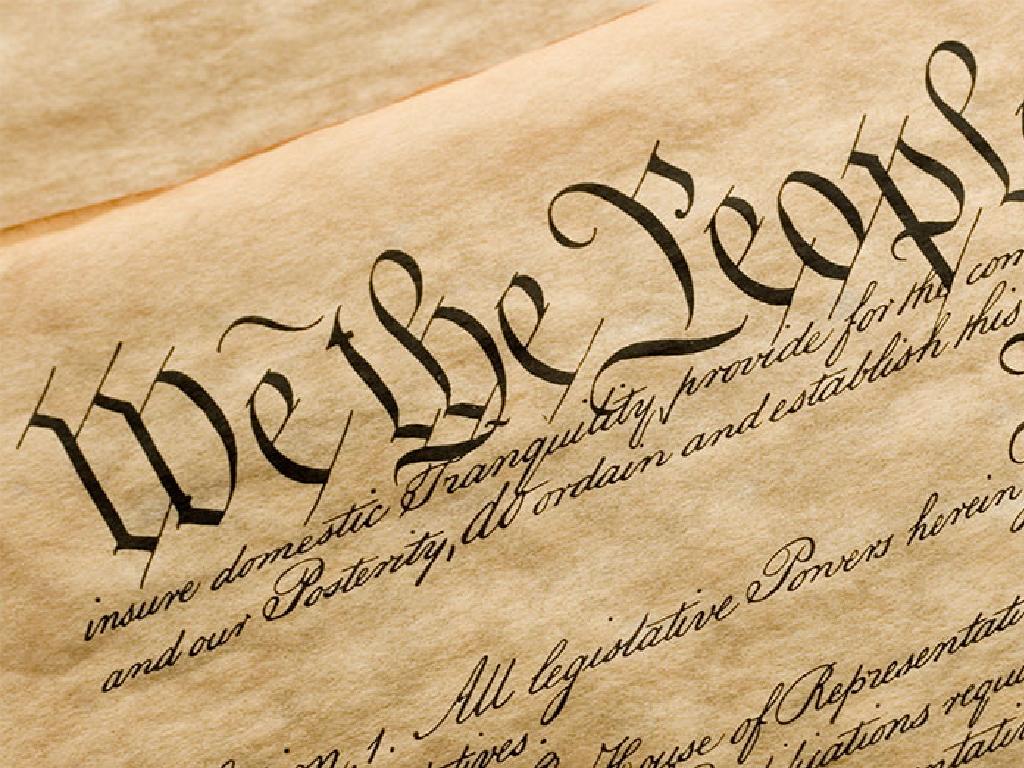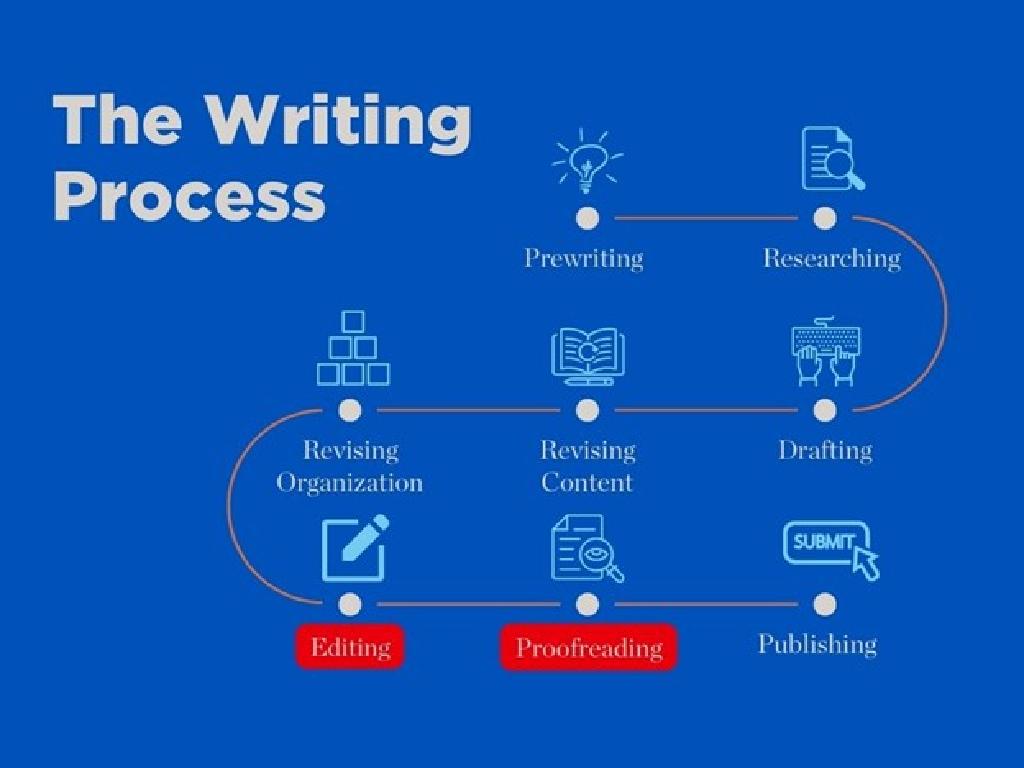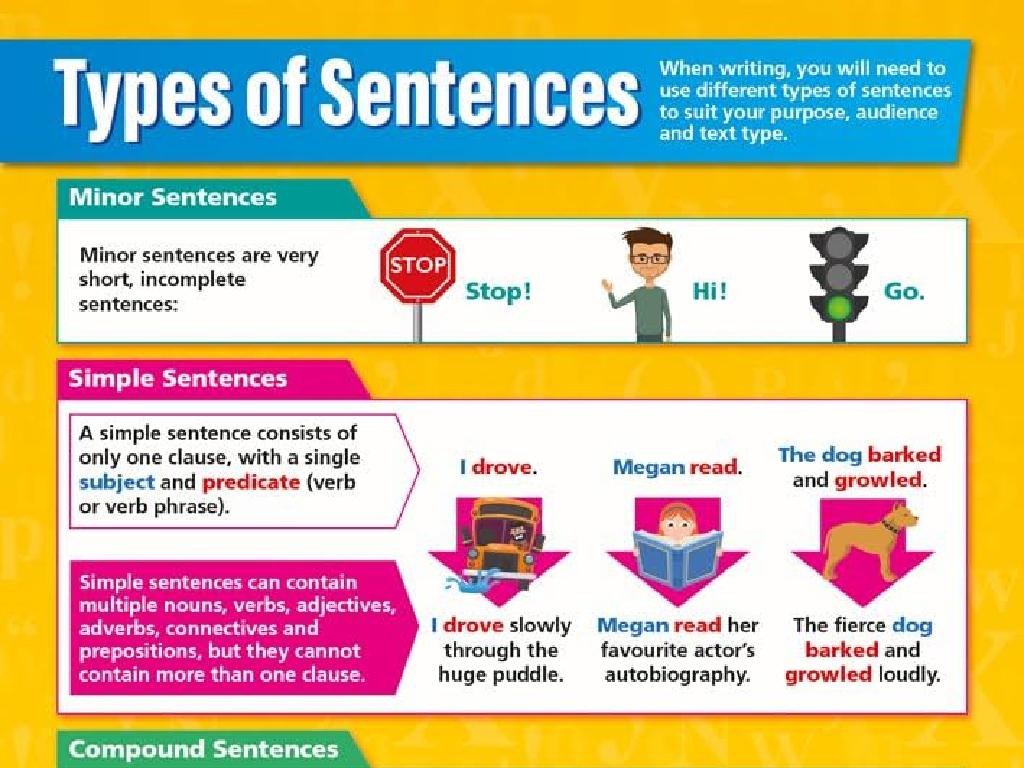Classify Objects By Three-Dimensional Shape
Subject: Science
Grade: Kindergarten
Topic: Shapes And Colors
Please LOG IN to download the presentation. Access is available to registered users only.
View More Content
Welcome to Shapes: Exploring 3D Shapes
– Greet our little explorers
– Today’s adventure: 3D shapes
– Discover shapes in our world
– Look around, what shapes do you see? Cubes, spheres, cones?
– Naming shapes together
– Let’s list shapes we know and find them here!
|
This slide is designed to introduce Kindergarten students to the concept of three-dimensional shapes in a fun and engaging way. Start the class with a warm greeting to make the children feel excited about the day’s lesson. Explain that 3D shapes are not flat; they are solid objects that have length, width, and height. Encourage the children to look around the classroom and identify objects that match basic 3D shapes like cubes (dice or blocks), spheres (balls), and cones (party hats). Make a list of the shapes they name and affirm their observations. This interactive approach will help them to recognize and name 3D shapes in their environment.
Exploring 3D Shapes
– 3D shapes are solid, not flat
– They have length, width, and height
– Examples include sphere, cube
– A sphere is like a ball
– More examples: cylinder, cone
– A cube is like a dice, a cylinder is like a can, and a cone is like a party hat
|
This slide introduces the concept of three-dimensional shapes to Kindergarten students. Emphasize that unlike 2D shapes, 3D shapes have depth, making them solid objects that can be held and touched. Use tangible examples like a ball for a sphere, a dice for a cube, a can for a cylinder, and a party hat for a cone to help students visualize and remember these shapes. Encourage the students to touch and hold objects that represent these shapes to better understand the concept of three dimensions. This tactile experience is crucial for their learning at this developmental stage.
Meet the Sphere: A 3D Shape
– A sphere is round like a ball
– It looks the same from every angle
– Sphere hunt in the classroom
– Can you spot objects that are shaped like spheres around us?
– Discuss sphere-shaped objects
– Let’s talk about things we found that are sphere-shaped
|
Introduce the concept of a sphere by comparing it to familiar round objects like balls. Explain that a sphere is a special shape that looks the same from all sides. Encourage the children to look around the classroom to find objects that are shaped like spheres. This could include globes, balloons, or even some toys. After the hunt, gather the children and discuss the objects they found. Ask them to describe how they knew these objects were spheres and what makes spheres different from other shapes. This activity will help reinforce their understanding of three-dimensional shapes in a fun and interactive way.
Say Hello to the Cube
– A cube has 6 square faces
– Each face of a cube is a perfect square
– Cubes look like boxes
– Counting a cube’s faces
– Let’s count each face together in class
– Cubes in everyday objects
– Find cubes around us, like dice or blocks
|
Introduce the cube by highlighting its geometry – six faces that are all squares. Use a physical cube to show its box-like shape. Engage the students by counting the faces of the cube together, reinforcing the concept of ‘face’ and ‘square’. Encourage the children to think of and discuss objects they play with or see daily that are shaped like cubes, such as dice, toy blocks, or sugar cubes. This will help them connect the concept of a cube to their everyday lives and understand the three-dimensional shape in a tangible way.
Discover the Cylinder
– A cylinder’s flat ends
– Two flat circles on top and bottom
– Cylinders stand like soup cans
– It’s shaped like a can and stands up
– Rolling a cylinder
– Let’s gently roll it on the floor
– Observing a cylinder’s movement
– Watch how it moves straight ahead
|
This slide introduces the concept of a cylinder to Kindergarten students. Emphasize that a cylinder has two flat ends that are shaped like circles, and one curved side that connects them. Use a can of soup as a relatable example to show how a cylinder stands. Engage the students in a hands-on activity by rolling a cylinder across the floor and observing how it moves. This will help them understand the shape and function of cylinders in a fun and interactive way. Encourage the students to touch and hold the cylinder to feel its flat ends and curved side.
The Cone is Fun!
– A cone has a pointy top
– A cone has a flat bottom
– Cones look like party hats
– Think of a birthday party hat or yummy ice cream
– Pretend to eat an ice cream cone
– Let’s use our imagination and have fun!
|
This slide introduces the concept of a cone to Kindergarten students by relating it to familiar objects such as party hats and ice cream cones. Emphasize the unique features of a cone, like its pointed top and flat bottom. Encourage the children to visualize and interact with the concept by pretending to eat an imaginary ice cream cone. This activity not only makes the learning process enjoyable but also helps them remember the shape of a cone. You can bring in a real party hat or an ice cream cone for a show-and-tell or have the children craft their own paper cones to reinforce the lesson.
Sorting Shapes by Names
– Group similar shapes together
– Learn shape names
– Shapes like circle, square, but 3D!
– Sort spheres into one group
– Spheres are ball-shaped
– Sort cubes into another group
– Cubes are like dice or blocks
|
This slide introduces the concept of sorting shapes to Kindergarten students. Start by explaining that shapes that look the same can be grouped together. Teach them the names of different three-dimensional shapes such as spheres and cubes. Use tangible examples like balls for spheres and dice or toy blocks for cubes to help them visually sort these shapes into separate groups. Encourage the students to touch and hold the examples if possible. This activity will help them recognize and categorize shapes by their names, which is a fundamental skill in understanding geometry. Make the activity interactive by allowing the students to find and sort shapes from around the classroom or from a provided set of objects.
Shapes in Our World: Exploring 3D Shapes
– 3D shapes fill our world
– A ball is like a sphere
– A sphere is round and rolls
– A box is similar to a cube
– Cubes have 6 equal square faces
– Find other 3D shapes around
– Look for cylinders, cones, and pyramids too!
|
This slide is designed to introduce Kindergarten students to the concept of three-dimensional shapes in their environment. Start by explaining that 3D shapes are not flat; they are solid objects that have length, width, and height. Use tangible examples like a ball to explain a sphere and a box to explain a cube. Encourage the students to explore their surroundings at home or in the classroom to find other 3D shapes such as cylinders (cans), cones (ice cream cones), and pyramids (Egyptian pyramids in pictures). This activity will help them recognize and classify objects based on their shapes, which is a fundamental skill in early geometry. The teacher should prepare to show real objects or images of these shapes to help students visualize and understand the concept better.
Class Activity: Shape Hunt Adventure
– Let’s search for 3D shapes
– Find classroom objects that match
– Look for cubes, spheres, cylinders, etc.
– Work in teams to discover shapes
– Use teamwork to find shapes together
– Help friends during the shape hunt
– If a friend is stuck, give them clues!
|
This slide introduces a hands-on class activity where students will explore their classroom to find objects that resemble three-dimensional shapes such as cubes, spheres, cylinders, and cones. Encourage the children to work in small groups to foster teamwork and collaborative learning. As they search, guide them to discuss the characteristics of each shape they find. Provide assistance and encourage students to help each other, using hints and clues to make the activity engaging. Possible activities could include finding a ball (sphere), a box (cube), a can (cylinder), or a party hat (cone). This activity will help solidify their understanding of 3D shapes in a fun and interactive way.
Show and Tell: 3D Shapes Around Us
– Show your chosen object
– Explain why you picked it
– Describe the object’s shape
– Is it a sphere, cube, cylinder, or cone?
– Discuss why it has that shape
– Does its shape help it function?
|
This slide is for a class activity where students will engage in a ‘Show and Tell’ to identify and classify objects by their three-dimensional shapes. Each student is encouraged to bring an object from home and discuss its shape, such as whether it’s a sphere, cube, cylinder, or cone. They should also think about why the object has that particular shape and how it relates to its use or function. For example, a ball is a sphere because it rolls easily, and a box is a cube because it stacks well. This activity will help students recognize 3D shapes in everyday objects and understand the practical reasons behind the shapes. Teachers should prepare to guide the discussion and provide positive feedback to each student.
Shape Art: Creating with 3D Shapes
– Create art using 3D shapes
– Use clay or playdough for shapes
– Soft materials like clay are perfect for molding
– Make your own 3D shapes
– Try making cubes, cones, cylinders, and spheres
– Display your shape art in class
|
This slide introduces a hands-on activity where students will learn about three-dimensional shapes by creating art. Provide clay or playdough for the students to mold into different 3D shapes such as cubes, cones, cylinders, and spheres. Encourage creativity and assist them in identifying the shapes they create. Once they have made their shapes, have a show-and-tell session where each student can display their art and talk about the shapes they used. This activity will help reinforce their understanding of 3D shapes in a fun and interactive way. Prepare to have a variety of examples and be ready to guide students who may need help shaping their creations.
Review and Goodbye: 3D Shapes
– Celebrating our 3D shape journey
– Naming all the shapes we learned
– Can you remember the sphere, cube, and cylinder?
– 3D shapes are all around us
– Find shapes at home, like cans (cylinders) or boxes (cubes)
– Keep exploring shapes every day
|
As we wrap up today’s lesson, it’s important to reinforce the children’s understanding and recognition of three-dimensional shapes. Encourage them to recall the shapes they’ve learned, such as spheres, cubes, and cylinders. Remind them to continue observing their environment to spot these shapes in the real world, which will help solidify their learning. For example, they might see spheres in balls, cubes in dice, and cylinders in cans. Celebrate their achievements in learning about 3D shapes and encourage them to keep looking for shapes in everything they encounter, turning it into a fun, ongoing scavenger hunt.

